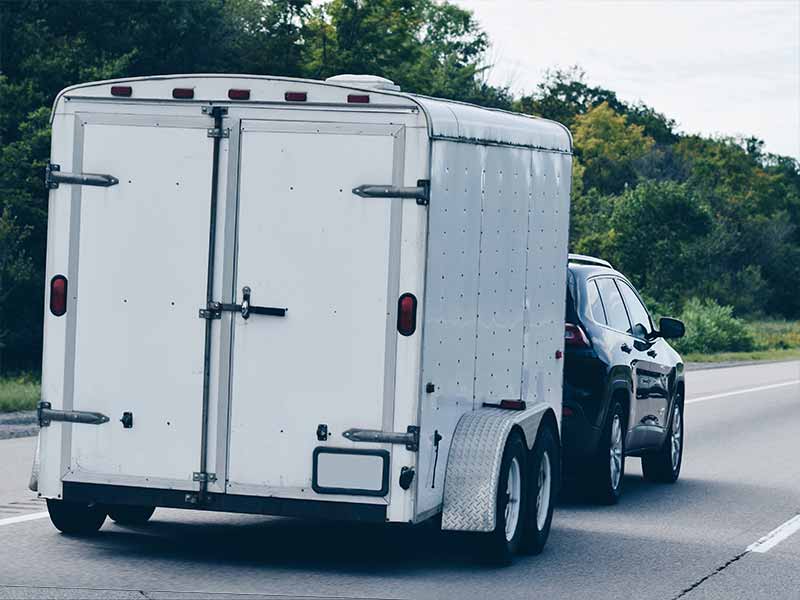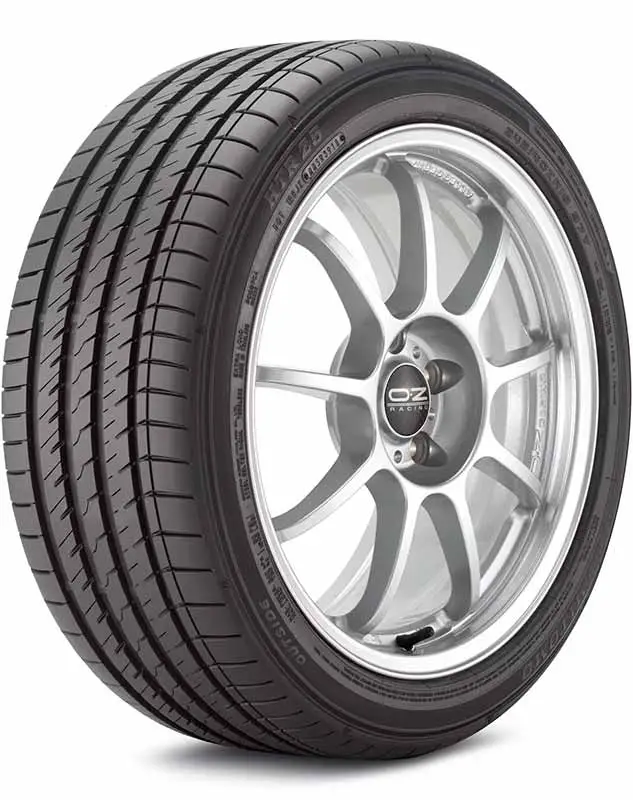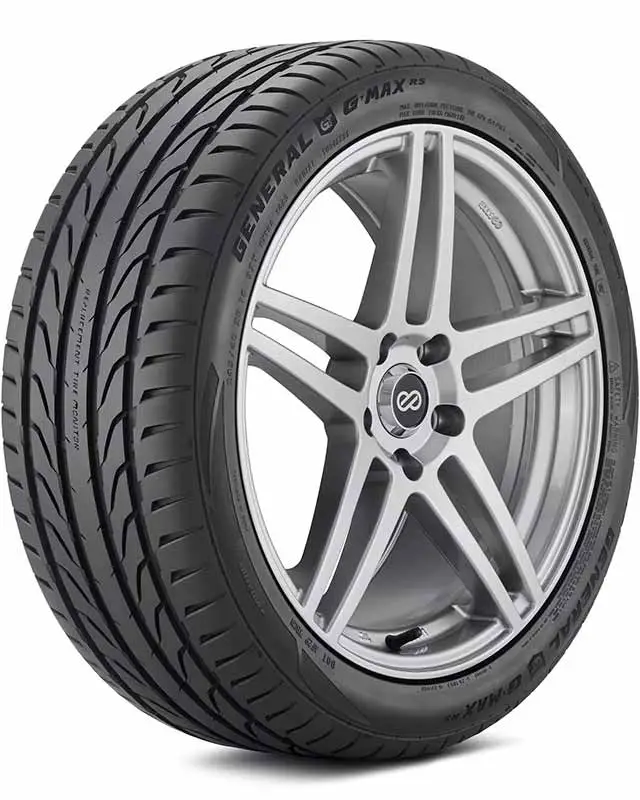It makes sense that heavy loads could benefit from adding air to your tires. But is this really a good idea? And if so, how do you know how much more air pressure to add?
Should I Increase Tire Pressure For A Heavy Load?
Yes, you should increase tire pressure when carrying a heavy load to ensure that your tires can handle the added weight and maintain optimal performance and safety on the road.
To determine how much pressure to add when you’re carrying a heavy load, your best bet is to refer to your owner’s manual or check the tire information placard that’s usually found on the driver’s side doorjamb or glove compartment.
You might think it’s a good idea to overinflate your tires closer to the max pressure when hauling a heavy load, but doing so incorrectly can have some serious effects on your vehicle’s handling, safety, tire wear, and fuel efficiency.
Let’s take a closer look.
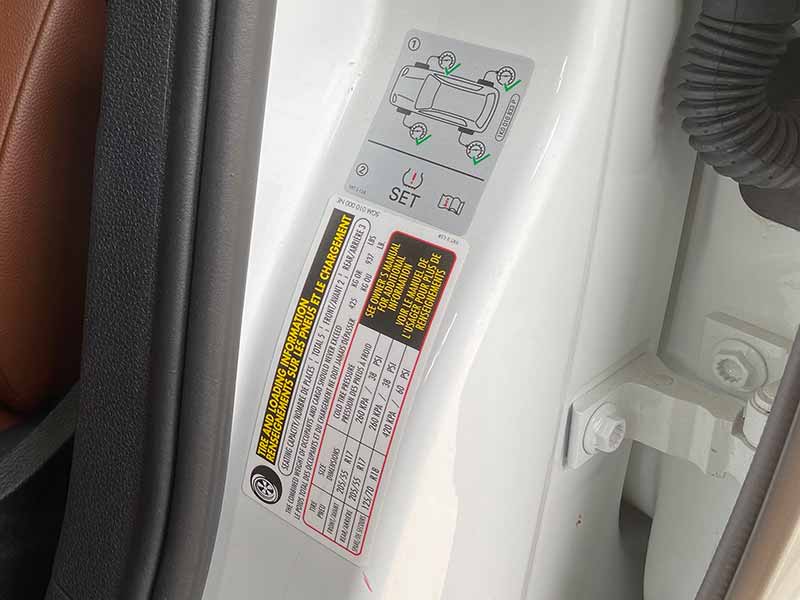
Recommended Tire Pressure For Heavy Loads
Your vehicle’s manufacturer provides a recommended pressure for heavy loads. Following this recommendation is important to make sure you’re safe and your car or truck handles correctly when carrying a heavy load.
Overinflating your tires can cause them to wear out faster, while underinflating can cause them to overheat and fail. You can find the recommended air pressure for heavy loads in your vehicle’s owner’s manual, or you can look for the tire information sticker on the driver’s door jamb.
How To Increase Tire Pressure For Heavy Loads Properly
When it comes to figuring out the correct air pressure for a heavy load, there are several factors to consider, such as the weight of the load and the type of your tires. To get started, your vehicle’s owner’s manual or the tire information sticker on the driver’s side door jamb or inside the glove box is a great resource for finding the recommended tire pressure for loaded and unloaded conditions.
The pressure recommended may be different for the front and rear tires, so be sure to adjust each tire to the proper amount. If you’re still unsure, consider consulting a tire professional or your local mechanic for help. They can explain the best air pressure for your specific vehicle and load to make sure you have the best safety and performance when carrying heavy loads.
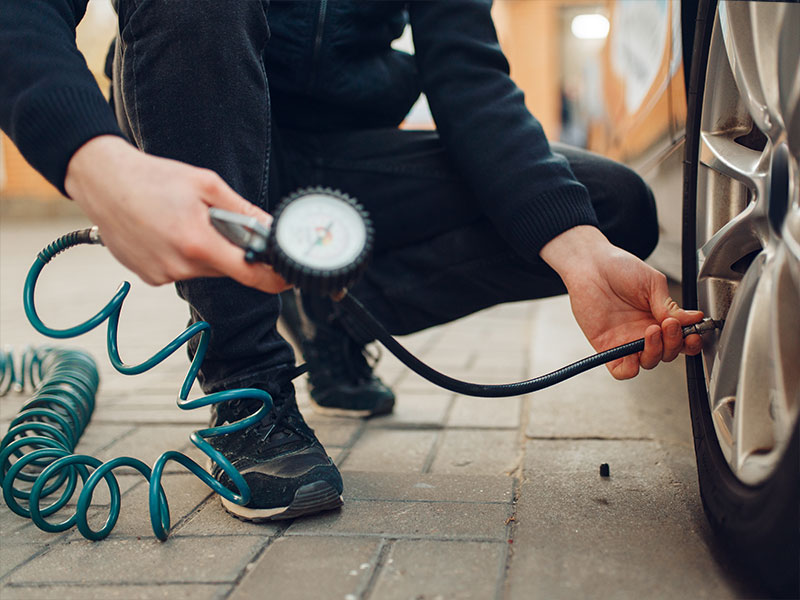
Adjusting Tire Pressure For Load
To determine the ideal air pressure for a heavy load, first, weigh your vehicle with the load you intend to carry. Then, check your owner’s manual or the tire information sticker on the driver’s door jamb to find the recommended pressure for the weight you plan to carry. If the recommended amount is higher than what’s already in your tires, add air until you reach the amount of pressure recommended.
It’s important to adjust the pressure safely and correctly to prevent overinflation or underinflation. You should always use a high-quality tire pressure gauge to check your tires. If you need to add air, make sure you don’t exceed the maximum tire pressure listed on the tire sidewall. Be sure and check when your tires are cold. Checking your tires before you start driving and they heat up will get the most accurate reading.
Adjusting Tire Pressure For Trailer Tires
When it comes to trailers, adjusting tire pressures is an important step to make sure you have a safe and smooth ride. Trailer tires have different load-carrying capacities than regular car and truck tires, which means you need to adjust the tire pressures based on the weight being carried. Depending on the size and type of your trailer, the correct pressure can vary, and it’s important to get it right.
To figure out the best air pressure for your trailer when carrying a load, you’ll want to check the trailer owner’s manual or the tire information sticker.

Loaded Vs Unloaded Tires
Let’s start with the difference between air pressure requirements when your car or truck is at its normal weight compared to when it’s carrying a heavy load. You can find the correct pressures for your tires listed in the owner’s manual or driver’s door jamb for the normal weight of your car or truck. But when you add weight to your vehicle, you need to adjust the pressure to make sure it’s safe and handles properly.
Handling
One of the biggest effects of hauling heavy loads is that it can make your vehicle handle differently. When you have a lot of weight in the back of your car or truck, it can cause the front end to lift up, which can make it harder to steer and control your vehicle. This can be especially dangerous if you’re driving at high speeds or if you have to make sudden turns or maneuvers.

Braking Distances
Another effect of hauling heavy loads is that it can make it harder to stop your vehicle quickly. When you have a heavy load, your vehicle’s brakes have to work harder to slow you down, which can cause them to wear down more quickly than usual. This can make it harder to stop your vehicle in an emergency, which can be dangerous for you and other drivers on the road.
Tire Wear
Hauling heavy loads can also cause your tires to wear down faster than usual. When you have a lot of weight in your vehicle, it puts extra pressure on your tires, which can cause them to wear down more quickly and even blow out if you’re not careful. This is why it’s important to make sure that your tires are properly inflated and that you’re not carrying more weight than your vehicle is designed to handle.
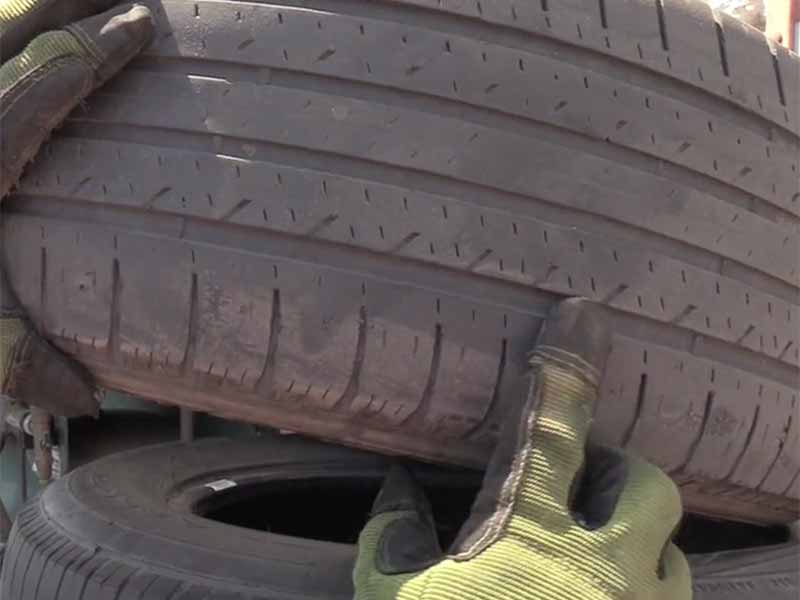
It’s important not to overinflate or underinflate your tires when carrying a heavy load. Overinflating your tires can cause them to ride harshly and decrease traction, while underinflation can cause them to heat up and wear out faster. It’s vital to check your owner’s manual to determine the maximum load capacity and adjust the pressure accordingly since various vehicles have different weight limits.
Tire Load Index
It’s important to choose tires with a load index that’s appropriate for your vehicle and the weight that you’ll be carrying. If you’re not sure what load index rating you need, you can check your vehicle’s owner’s manual or talk to a tire expert. And if you’re planning on carrying heavy loads, make sure to choose tires with a higher load index to ensure that they can safely support the weight.
The load index rating is usually displayed on the sidewall of your tire, and it’s represented by a number. The higher the number, the more weight the tire can support. For example, a tire with a load index of 90 can support a maximum weight of 1,323 pounds, while a tire with a load index of 110 can support a maximum weight of 2,337 pounds.
Tire Load Index Chart
| Load Index | Load Capacity (lbs) |
|---|---|
| 71 | 761 |
| 72 | 783 |
| 73 | 805 |
| 74 | 827 |
| 75 | 853 |
| 76 | 882 |
| 77 | 908 |
| 78 | 937 |
| 79 | 963 |
| 80 | 992 |
| 81 | 1019 |
| 82 | 1047 |
| 83 | 1074 |
| 84 | 1102 |
| 85 | 1135 |
| 86 | 1168 |
| 87 | 1201 |
| 88 | 1235 |
| 89 | 1279 |
| 90 | 1323 |
| 91 | 1356 |
| 92 | 1389 |
| 93 | 1433 |
| 94 | 1477 |
| 95 | 1521 |
| 96 | 1565 |
| 97 | 1609 |
| 98 | 1653 |
| 99 | 1709 |
| 100 | 1764 |
| 101 | 1819 |
| 102 | 1874 |
| 103 | 1929 |
| 104 | 1984 |
| 105 | 2039 |
| Load Index | Load Capacity (lbs) |
|---|---|
| 106 | 2094 |
| 107 | 2149 |
| 108 | 2205 |
| 109 | 2271 |
| 110 | 2337 |
| 111 | 2403 |
| 112 | 2469 |
| 113 | 2535 |
| 114 | 2601 |
| 115 | 2679 |
| 116 | 2756 |
| 117 | 2833 |
| 118 | 2910 |
| 119 | 2998 |
| 120 | 3086 |
| 121 | 3197 |
| 122 | 3307 |
| 123 | 3417 |
| 124 | 3527 |
| 125 | 3638 |
| 126 | 3748 |
| 127 | 3858 |
| 128 | 3970 |
| 129 | 4079 |
| 130 | 4189 |
| 131 | 4299 |
| 132 | 4409 |
| 133 | 4541 |
| 134 | 4674 |
| 135 | 4806 |
| 136 | 4938 |
| 137 | 5071 |
| 138 | 5203 |
| 139 | 5357 |
| 140 | 5512 |
The load index for passenger cars and light trucks can vary widely depending on the type of vehicle and the intended use. The highest load index for a passenger car tire is typically around 110, with a maximum weight capacity of 2,756 pounds per tire. However, the lowest load index on a passenger car tire is about 70, with a maximum weight capacity of 739 pounds per tire.
For light trucks, the load index can range from around 100 to 130 or higher. It’s important to note that larger trucks and heavy-duty vehicles may require even higher load index tires to support their weight and the weight of any cargo they may be carrying. It’s always important to consult the vehicle’s owner manual or a tire professional to determine the appropriate load index for your specific vehicle and usage.
Does Tire Pressure Change With Load?
Yes, tire pressure changes when your vehicle is carrying a heavy load. The added weight compresses the tires, increasing the contact patch and causing the tire to bulge outward. This bulging can cause uneven tire wear, poor handling, and reduced safety.
Pressure can also change due to temperature changes. As the temperature drops, the air pressure inside your tires also drops. As temperature increases, so does the pressure in your tires. When adjusting pressures for a heavy load, it’s important to remember this and check your tire pressure if there’s a big change in temperature during the time you’re car or truck is loaded and you’re making the haul.
Max Tire Pressure Vs Recommended Tire Pressure
Properly inflated tires become even more important when carrying a heavy load in your car, truck, or trailer. While you might be tempted to max out the air pressure to improve fuel economy or handling, this is actually very unsafe.
Overinflated tires can reduce your vehicle’s handling and stability, particularly in challenging weather conditions. On the other hand, underinflated tires can lead to premature wear and tear, reduce fuel efficiency, and increase your risk of a tire blowout.
That’s why you should always stick to the recommended air pressure listed in your vehicle’s owner’s manual or the tire information placard, even when carrying a heavy load. If you’re unsure what the correct air pressure is for your vehicle, don’t hesitate to seek guidance from a tire expert or the manufacturer. Ultimately, taking the time to check and adjust your air pressure will help make sure you have a safe and comfortable ride, no matter how much you’re carrying.

Resources
Below are some links you may find helpful when learning about tires
Final Thoughts
Adjusting tire pressure for a heavy load is important for safe and efficient driving. Underinflated or overinflated tires can have a serious impact on your vehicle’s handling, safety, and fuel efficiency.
To figure out the proper air pressure in your tires for a heavy load, weigh your vehicle, refer to your owner’s manual, and adjust your pressures according to those instructions. By following these guidelines, you can make sure that your car or truck handles correctly and that your tires will wear evenly, whether it’s loaded or unloaded.
Good luck and happy motoring.
